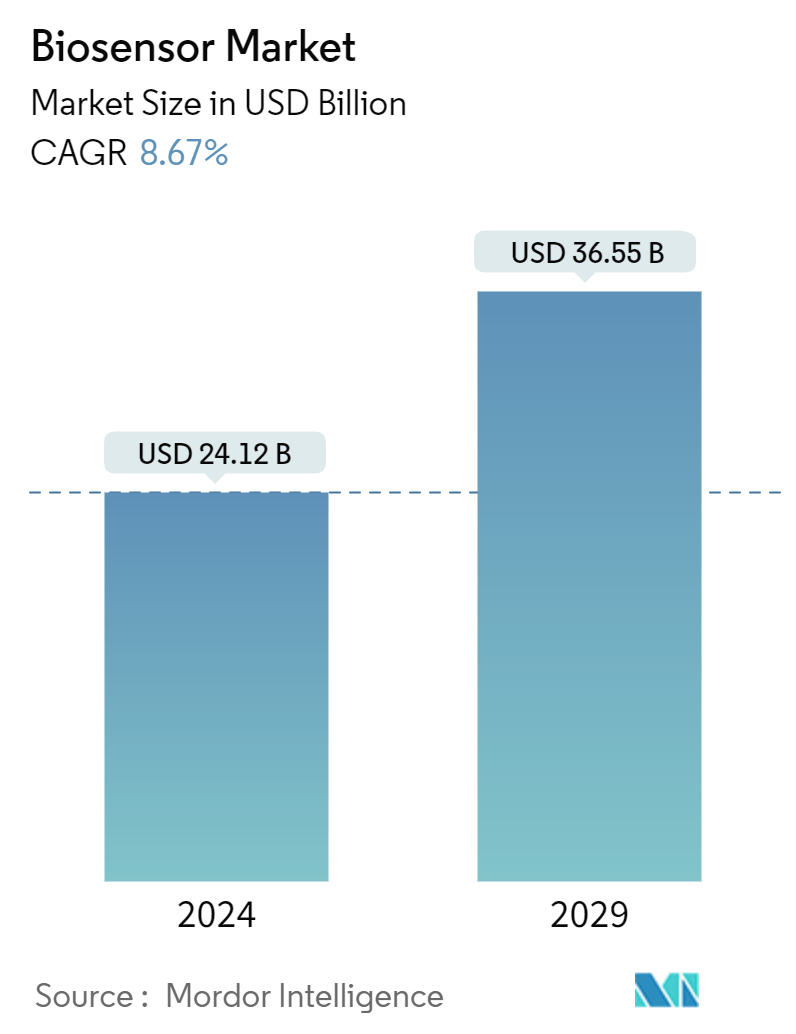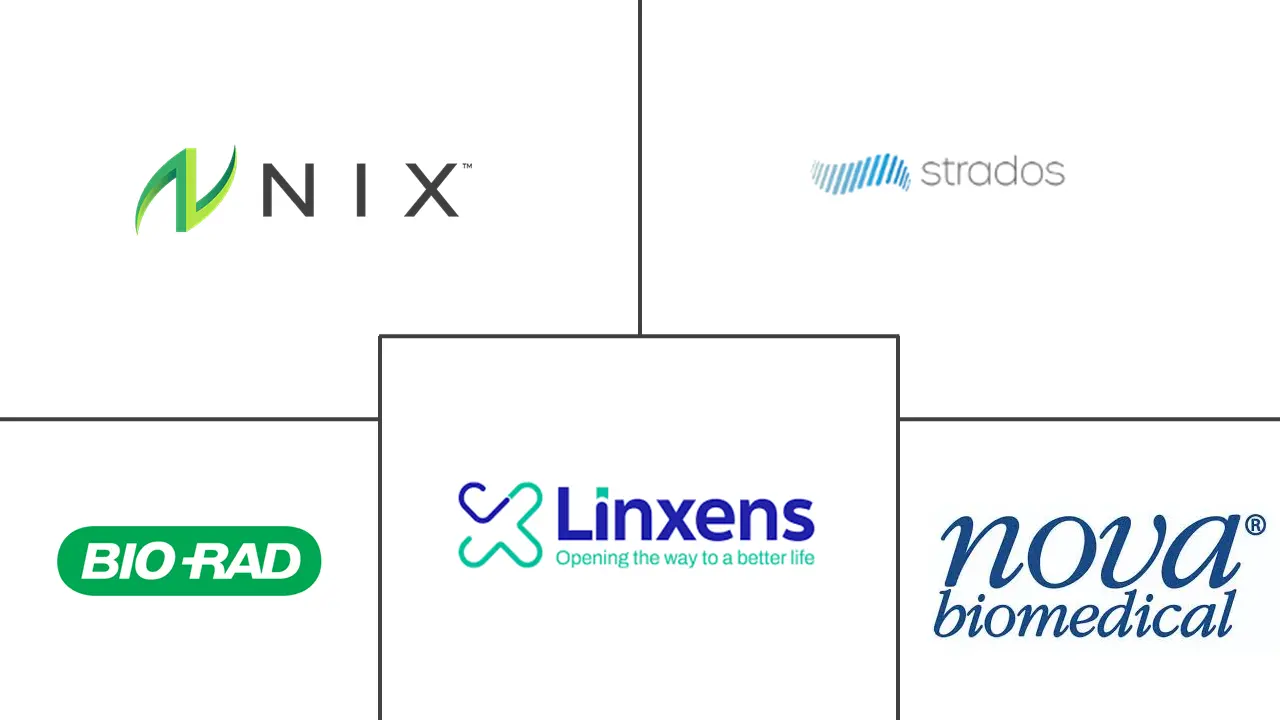Market Size of Biosensor Industry

| Study Period | 2019 - 2029 |
| Market Size (2024) | USD 24.12 Billion |
| Market Size (2029) | USD 36.55 Billion |
| CAGR (2024 - 2029) | 8.67 % |
| Fastest Growing Market | Asia Pacific |
| Largest Market | North America |
| Market Concentration | Low |
Major Players
*Disclaimer: Major Players sorted in no particular order |
Biosensor Market Analysis
The Biosensor Market size is estimated at USD 24.12 billion in 2024, and is expected to reach USD 36.55 billion by 2029, growing at a CAGR of 8.67% during the forecast period (2024-2029).
- Biosensors are sensing devices that measure a reaction between bodily fluids and enzymes. One of the most common examples of a biosensor is a blood glucose strip for diabetes patients. These sensors can also gather other blood, sweat, and saliva information. In recent years, the imperative usage of biosensors in several applications, like the biomedical, food industry, clinical analysis, defense, safety, environmental monitoring, etc., has led to significant importance and demand to fabricate them.
- Furthermore, due to the prevalence of chronic and lifestyle-related ailments, consumers are increasingly urged to use biosensors to detect pathogenic activities in the body regularly, which is projected to drive the demand for biosensors. The application of biosensors is also expanding due to their increased availability and affordability due to the adoption of nanotechnology and the rising elderly population worldwide.
- Portable, flexible biosensors represent a rapidly growing and increasingly important area of research. There are some significant advantages of portable, flexible biosensors, such as a more user-friendly design, less affected by external conditions, the ability to provide test results quickly, low production cost the production cost and the ability to be fitted to the skin to achieve more real-time sampling. Many biosensor substrate materials come from polymers; perfect fabrication technology and abundant polymers strongly support the development of portable, flexible sensors.
- Paper-based biosensors have also received considerable interest in recent years owing to their advantages, such as portability, foldability, and accessibility. Another significant advantage driving interest in paper-based biosensors is the ease with which the surface of paper-based biosensors can be modified with nanomaterials and biomolecules, significantly improving the sensing performance. The other necessary type of flexible biosensors uses textiles as substrate materials, the prospect of which is also promising in the area of wearable sensors due to the knittable nature of the fabric.
- In recent years, the commercialization of biosensor technology has needed to be more active, primarily due to high costs and a demand that has largely been confined to the healthcare sector. Industry players face hurdles in commercializing biosensors for non-medical uses, like biodefense and military applications, mainly because of limited R&D efforts and the need for more positive outcomes. Compounding these challenges, the biosensors market is also expected to be hindered by the costs tied to R&D, coupled with protracted certification and approval cycles. Furthermore, the market grapples with challenges such as hesitance to adopt new treatment methodologies and pricing pressures in POC settings.
- Regulatory policies concerning healthcare devices are the macroeconomic factors influencing the market's growth trajectory. Stricter regulations can decelerate the market by elongating the time and inflating the costs of launching new products. Moreover, although emerging economies offer substantial growth potential, their constrained healthcare budgets and underdeveloped infrastructure can hinder the widespread adoption of biosensors. This limitation is further exacerbated by lower-income populations' inability to afford these technologies, constraining the market's expansion.

